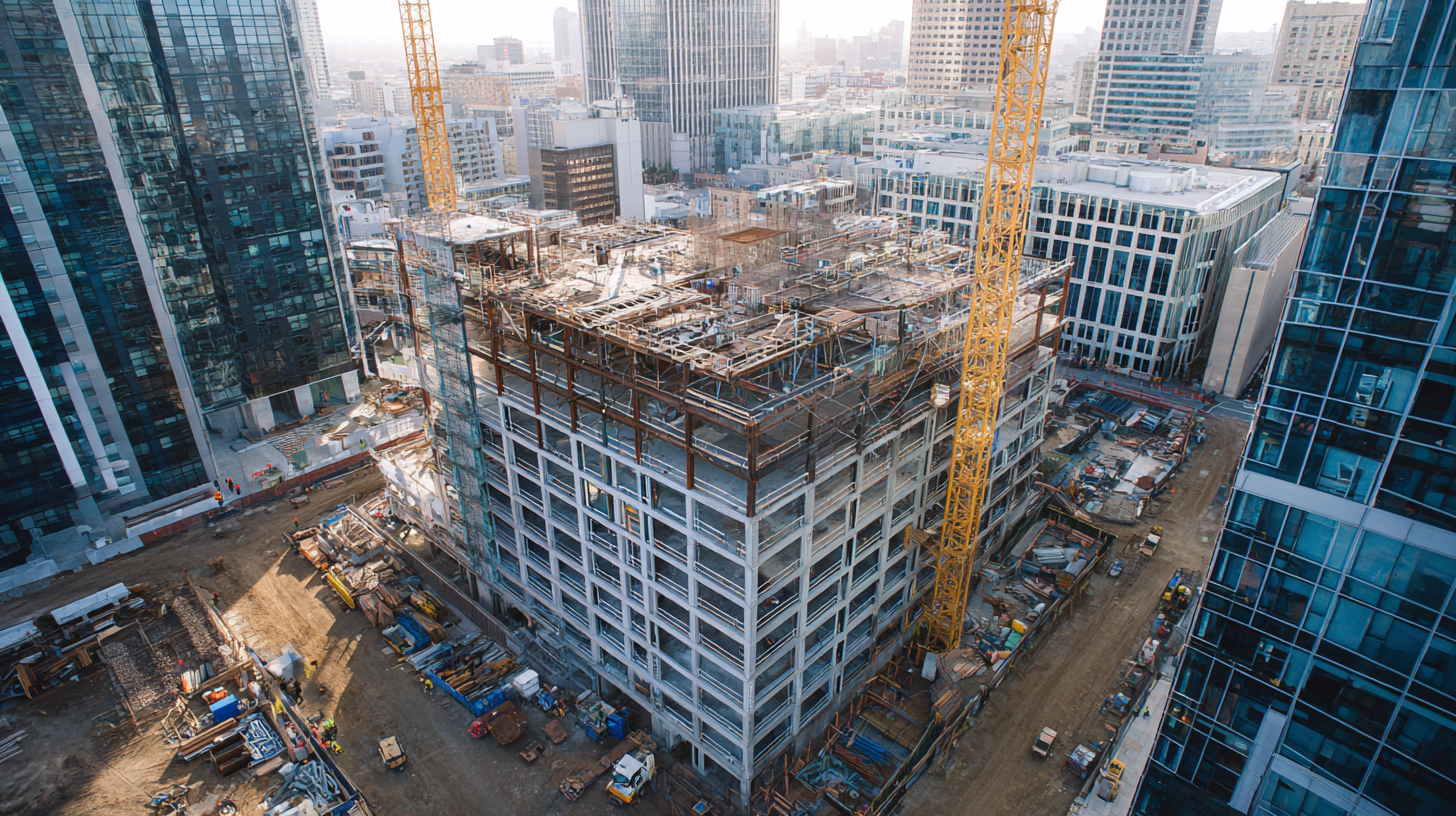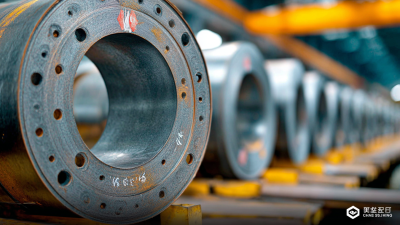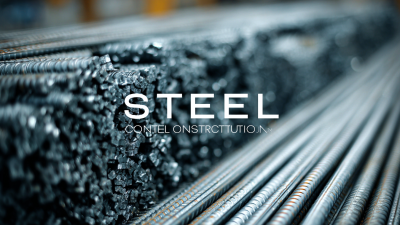
As the construction industry grapples with the urgent need for sustainability, Steel Construction emerges as a pivotal player in reshaping building practices. The World Steel Association reports that steel is presently the most recycled material globally, with over 85% of steel in construction being recycled at the end of its lifecycle. Furthermore, studies from the International Energy Agency indicate that increased use of advanced steel production technologies could reduce greenhouse gas emissions in the sector by up to 25% by 2030. These advancements not only enhance the environmental profile of construction but also promise significant economic benefits, with the global sustainable steel market projected to reach USD 500 billion by 2027. Through innovations in design and material efficiency, Steel Construction is not just a structural choice but a strategic response to the future demands of eco-friendly building practices.

The construction industry is witnessing a transformative shift towards sustainability, especially in steel construction. As traditional steel production accounts for nearly 7% of global carbon emissions, the focus is now on innovative materials that can mitigate this impact. Eco-friendly alternatives, such as recycled steel and new alloys that require less energy for production, are gaining traction. According to a report from the World Steel Association, the use of recycled steel can reduce carbon emissions by up to 58%, showing the potential of adopting circular economy practices in the sector.
Additionally, advancements like carbon capture and storage (CCS) technologies are making strides in steel manufacturing. The Global CCS Institute notes that implementing such technologies could cut emissions by approximately 1.5 gigatons per year by 2030. Furthermore, biogenic materials, like bamboo and mycelium composites, are being explored as reinforced alternatives, providing both structural integrity and reduced environmental footprints. As the industry embraces these eco-friendly innovations, the future of steel construction will not only enhance building practices but also pave the way for a more sustainable urban landscape.

The integration of smart technologies in steel construction offers unprecedented opportunities to enhance energy efficiency in buildings. According to the International Energy Agency, buildings account for nearly 40% of global energy consumption, underscoring the urgent need for advancements in energy-saving practices. By leveraging IoT devices, artificial intelligence, and automated systems, construction professionals can monitor and optimize energy use in real-time, significantly reducing a building's carbon footprint. Reports from McKinsey indicate that smart technologies can help achieve energy savings of up to 30% in commercial buildings, showcasing their potential impact on sustainability.

To maximize the benefits of these technologies, consider implementing these tips: first, invest in high-quality sensors that provide accurate data on energy use and occupancy, enabling tailored heating and cooling systems. Second, utilize data analytics to identify patterns and predict energy demands, allowing for more efficient resource allocation. Lastly, encourage collaboration among various stakeholders, including architects, engineers, and technology providers, to ensure a comprehensive approach to integrating smart solutions into steel construction projects.
Furthermore, the shift towards sustainable building practices is not just about energy efficiency. According to a report by the World Green Building Council, green buildings can enhance occupant well-being, leading to higher productivity and reduced absenteeism among employees. By focusing on smart technology integration, the steel construction industry can position itself at the forefront of sustainable development, contributing to a greener future.
Lifecycle assessment (LCA) is an invaluable tool in evaluating the environmental impact of steel structures. By analyzing the entire lifecycle of steel—from raw material extraction to production, use, and eventual disposal—stakeholders can identify opportunities to enhance sustainability. This comprehensive assessment not only provides a clear picture of resource consumption and emissions but also helps in making informed decisions that promote eco-friendly practices in steel construction.
To effectively implement LCA, consider these tips: first, collaborate with suppliers who prioritize sustainable practices to ensure the quality of materials used. Second, utilize software tools that specialize in LCA to streamline the assessment process, allowing for quicker and more accurate evaluations. Lastly, foster engagement with all project stakeholders to enhance transparency and encourage the incorporation of sustainable techniques throughout the construction phase.
As advancements in sustainable building practices continue to evolve, integrating lifecycle assessments into steel construction will play a crucial role in minimizing environmental impacts. By continuously measuring and re-evaluating the lifecycle of steel structures, the industry can take significant steps toward a greener future while meeting the growing demand for environmentally responsible construction solutions.
The construction industry is witnessing a significant shift towards sustainable building practices, with modular construction emerging as a key strategy in optimizing steel fabrication processes. By utilizing prefabricated components, modular construction not only minimizes waste but also improves efficiency, which is critical in meeting the increasing demand for sustainable infrastructure. According to a 2022 report by McKinsey & Company, modular construction can cut project delivery timelines by up to 50%, resulting in reduced carbon emissions associated with traditional construction methods.
Furthermore, the integration of sustainable practices in steel fabrication extends beyond the manufacturing phase. The World Steel Association reported that the recycling rate of steel is approximately 85%, making it one of the most sustainable building materials available. Modular construction allows for the efficient use of steel, where components can be designed for disassembly and reuse, enhancing the lifecycle of materials. This not only conserves resources but also aligns with global goals for minimizing environmental impacts, echoing the industry's transition towards a circular economy in construction.
| Dimension | Current Practices | Future Innovations | Impact on Sustainability |
|---|---|---|---|
| Material Efficiency | Recycling scrap steel, using high-strength alloys | 3D printing with steel, advanced alloys | Reduces resource extraction, lower carbon footprint |
| Waste Management | Use of off-cuts and reusables | Zero waste design practices, improved sorting technologies | Minimizes landfill impact, promotes circular economy |
| Energy Use | Traditional electric and fuel-based systems | Use of renewable energy sources in fabrication | Lower operational carbon emissions |
| Construction Speed | On-site assembly with traditional methods | Modular construction techniques | Reduced time on-site, minimizes disruption |
| Lifecycle Assessment | Limited scope assessments | Comprehensive lifecycle impact studies | Informed decision-making for sustainability |
In recent years, regulatory trends have increasingly focused on sustainability within the steel construction industry. Governments and organizations are implementing stricter standards aimed at reducing carbon footprints and promoting responsible sourcing. These changing standards require stakeholders to adapt and innovate, ensuring that their practices align with environmental objectives while maintaining efficiency and economic viability.
To navigate these evolving regulations, construction firms should keep abreast of legislative changes and engage with industry groups that advocate for sustainable practices. It's crucial to not only comply with current standards but also anticipate future regulations. Investing in training for staff on sustainable methods and materials can help an organization remain competitive in a market that values eco-friendly practices.
Tip: Regularly conduct sustainability audits within your projects to identify areas for improvement and compliance with new standards. Collaborate with suppliers who prioritize sustainable materials to strengthen your supply chain's integrity. Lastly, consider participating in forums or workshops related to sustainable construction to share insights and learn from leading experts in the field.





